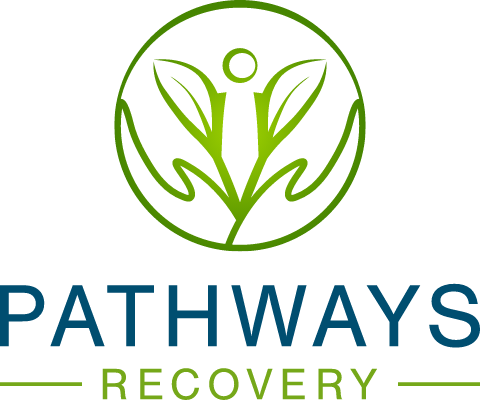Cocaine Detox Treatment
Identifying Cocaine Addiction, Causes, and Treatment
According to a survey presented by the National Institute of Drug Abuse (NIDA), over 15% of American adults have tried cocaine. Now, simply trying a substance doesn’t mean you will end up addicted. A great example of this is alcohol. It’s common to casually drink with friends on a night out but that doesn’t mean that you will be guaranteed to get addicted.
Addiction is a complex science and that is part of why it’s so critical to get care from professionals. It is part of what makes finding treatment challenging because sometimes it is hard to know what is safe and effective. This is also seen when it comes to detoxification from substances and drugs.
There are two common models of detox: social and medical. Medical detox is by far the more evidence-based and safe approach. It is also what we use at Pathways Recovery, in Sacramento, when treating someone who is detoxing from cocaine.
But, before we get there, let’s talk about what cocaine actually is, where it came from, and how we can recognize it.
What is Cocaine?
Cocaine is an addictive drug know as an “upper”. This means that cocaine is known to “up” levels of alertness, attention, and energy. It belongs to a class of substances known as stimulants. It’s made from the coca plant, which is native to South America.
Around 913,000 Americans met the Diagnostic and Statistical Manual of Mental Disorders (also known as the DSM-5) criteria for dependence on cocaine. According to the National Survey on Drug Use and Health(NSDUH), in 2014 there were 1.5 million users of cocaine aged 12 and older.
We also saw in 2011, as reported by the Drug Abuse Warning Network, that cocaine was involved in almost half of the 1.3 million visits to emergency rooms for drug use. This makes up a whopping 24% of all ER visits during the year!
The 2019 Drug Enforcement Agency (DEA) National Drug Threat Assessment lists cocaine as a resurgent problem in the U.S., meaning that the legacy of cocaine usage in the U.S. was not left in the 80s. Cocaine may have been super popular in the 80s and 90s but its history dates back much further. In fact, cocaine being used as a stimulant, or “upper” can be traced back over thousands of years.
In South American countries like Peru and Colombia, coca leaves were frequently chewed for their effects. Within the last 100 years, these naturally occurring plant-based chemicals were purified into what is known as cocaine hydrochloride. Research has since found that in this form cocaine is addictive, especially with repeated use.
It also has many names, known as street names. These other names for it include:
- Coke
- Snow
- Rock
- Blow
- Crack
- Powder
How Do You Know If Someone Is On Cocaine?
People who repeatedly use cocaine may seem ready to go all the time: ready to do the next task, the next goal, the next mission. They will be energetic and have a peppy energy that is oftentimes unmatched by those around them.
Having a boundless energy is very characteristic of those on cocaine. Plus, most of the time they keep on going, and going, and going! It is possible to mistake the way someone acts while using cocaine regularly as someone with a naturally peppy personality. Of course, there are people who really are just that peppy so it’s important to keep that in mind before assuming—or accusing anyone of using cocaine.
Sometimes, the person might also seem a little frantic. You may notice wild ideas and low impulse control. Maybe they always make decisions in split seconds without much thought, or they have trouble maintaining their inhibitions. Also, some times, if someone is regularly using cocaine they will appear edgy, which may seem out of the ordinary for them.
There are other noticeable side effects of cocaine that can be long-term or short-term. Short-term side effects of cocaine may include:
- Extreme sensitivity to touch, sound, and sight
- Intense happiness
- Anger/irritability
- Paranoid feeling
- Decreased appetite
- Dilated pupils (cocaine eyes)
People who use cocaine often may also have more serious side effects and health problems that can impact them for the long-term, like:
- Headaches
- Convulsions and seizures
- Heart disease, heart attack, and stroke
- Mood problems
- Sexual trouble
- Lung damage
Repeated use also may lead to the need for more and more. This is called excessive use and can be very dangerous. When someone uses a lot of cocaine in a small span of time, like a few days, they risk overdose and in some cases this can lead to seizures or death.
Looking for these signs can help families and friends to recognize cocaine use or addiction early. Another way to recognize cocaine use is to know how to identify cocaine.

It Is Important To Be Able To Identify Cocaine
It is possible for cocaine to come in different forms. The most common in the United States and in American pop culture is a fine, white powder. This is usually what we see in movies and TV. Sometimes, we see in it lines on a table and other times we see it as “bricks” being seized.
The powdered type of cocaine is generally mixed in, and “weakened” with inert substances. Sometimes the cocaine may be cut with another active drug like:
- Procaine (a local anesthetic, something that numbs a small location)
- Amphetamine (another stimulant)
- Heroin—in what is known as a “speedball.”
Cocaine can also be made into a solid rock that resembles a crystal. This is often known as crack cocaine, rock, or simply crack. So, now that we know what to look for to know if someone may be using, let’s look at addiction to cocaine.
What Is Cocaine Addiction?
Addiction typically makes us think of “a certain type of person”, but most of the time these stereotypes are inaccurate and hurtful. When it comes to cocaine addiction, the stigmas are still there and while each substance has its own stereotypes, all substances come with their own types of stigmas.
Cocaine addiction—like other forms of addiction—comes with a chemical and emotional dependency on the substance. Remember, an addiction is often referring to some type of physical or mental dependence on a substance.
Like we said before, addiction in general is a complex condition. People with an addiction (severe substance use disorder) have an intense focus on using a substance, like cocaine, to the point that it takes over their life. This means that it can be all-absorbing for them, and this can be incredibly dangerous for not only themselves but those around them.
There are some clear signs and symptoms that you may notice in someone with an addiction. The symptoms of addiction or substance use disorder fall under four categories:
- Impaired control: a craving or strong urge to use the substance and failed attempts to lower use
- Social problems: substance use causes failure to complete major tasks at work, school or home
- Risky use: continued use despite known problems
- Drug effects: tolerance or withdrawal symptoms
It can also cause an intense feeling of dependency on a substance. These dependencies can come with serious side effects. These side effects could be from use or from withdrawal.
Cravings, Withdrawal And Overdose Are Realities Of Cocaine Addiction And Detox
Cocaine often leads to strong cravings for the high or stimulated feelings that it brings. But the more often someone uses cocaine, the more the brain will adapt to it which leads to dependency and tolerance. This means that a stronger dose will be needed to feel the same high. Like we said before, that craving for more and more can lead to long-term health impacts, and it turns out your brain isn’t safe from these changes either.
In fact, research shows that stronger, more frequent doses can also cause long-term changes in brain chemistry. Sometimes, the body and mind even begin to rely on the substance to have those feelings at all. This can make it harder to think, sleep, and recall things. This can lead to a dangerous addiction or intense cravings that lead to more use which can in turn lead to an overdose.
This is part of why it’s so important to come off of cocaine safely and with support.
Detoxing From Cocaine The Safe And Medical Way
When we start to hear the word detox, or even if you do a quick Google search, it can show all sorts of juice cleanses, detox for skin, and all sort of different things. Drug and alcohol detox is a little different—or a lot different, really.
Detox treatment usually begins with a screening and a medical evaluation by a trained and professional medical team. Based on these evaluations and some discussions, usually a prescription is written. These prescriptions feature appropriate detox medications. This is part of why it is known as “medical detox” versus “social detox”, which focuses on the therapy without medication or medical intervention.
Many of us are prone to wonder: “what does detox look like” and “what can I expect”, and whether you are seeking treatment for yourself or a loved one, this is a totally natural response.
In fact, this is a question we get asked all the time here at Pathways Recovery Sacramento, so we’ll answer by walking you through our own process. The process usually takes seven days. If a case is severe enough, it may take longer.

This is why, here at Pathways Recovery Sacramento, we provide a home-like environment where our clients undergo medically-supervised cocaine detox. In our specialized and comfortable environment, each client is closely monitored to ensure their safety during the detox process.
Detox symptoms are managed by medication that is prescribed by one of our licensed medical providers, and the response to the medication is supervised. Alongside our detox treatment medications, our clients are provided with vitamin and mineral supplements, amino acids, and highly nutritious meals during their stay to lessen the drug and alcohol withdrawal symptoms and to restore the body’s balance.
This type of supervision is critical as a mismanaged detox process can be life-threatening for severe addictions. We are also proud to offer educational resources to help individuals on the path towards long-term recovery.
Seeking Detox Treatment At Pathways Recovery And Easing Withdrawal Symptoms
We offer an inpatient residential alcohol and drug detox center. Our facility is located in the Sacramento area of Northern California while our main office and outpatient counseling center is located in Roseville, CA.
We are a medically-supervised facility which means we work collaboratively with a medical team that includes an experienced doctor of addiction medicine and a registered nurse who both have many years of experience working with addictive disorders and other co-occurring dual diagnosis mental health issues.
We provide alcohol and or drug detox services in the safety and comfort of a residential home. We are staffed 24 hours and day with an experienced team of certified addiction counselors.
Still Have Questions? Check Out Our FAQ’s
How long does cocaine stay in your system?
Cocaine and the metabolites, or chemical pieces that come from cocaine use, are usually seen in urine for up to three days. Heavy use, on the other hand, can lead to detection in the urine for up to two weeks, or 14 days. In some cases, cocaine can be detected via a hair test years later.
What is cocaine made of?
Cocaine initially came from the coca plant found naturally in South America. Now it comes from a purified synthetic type of cocaine known as cocaine hydrochloride.
What type of drug is cocaine?
Cocaine is what is known as a stimulant. It acts as an energizer—or upper—for those who use it. This can lead to feelings of euphoria, or a high, which in turn can help add to the distinct cravings that are felt when using cocaine.
Stop Waiting, Call Today
To find out more how we can help call our drug and alcohol addiction center anytime 24/7 at (916) 735-8377 for a confidential consultation.
We can verify insurance coverage and benefit information in about an hour and can get the process of admission to our addiction treatment center started quickly.
When you need an addiction treatment center that provides high-quality care quickly, give us a call. It would be our pleasure to assist you.

